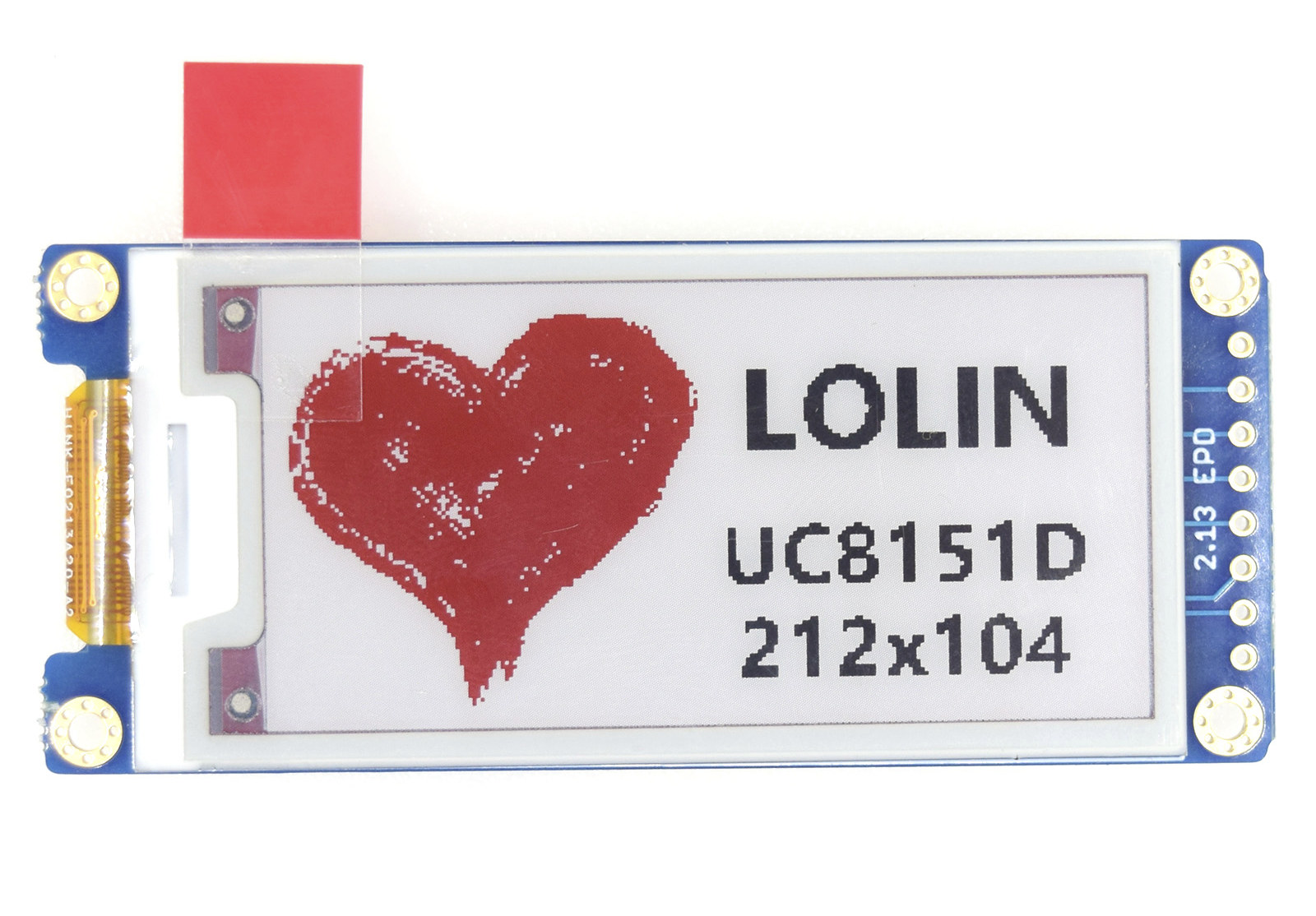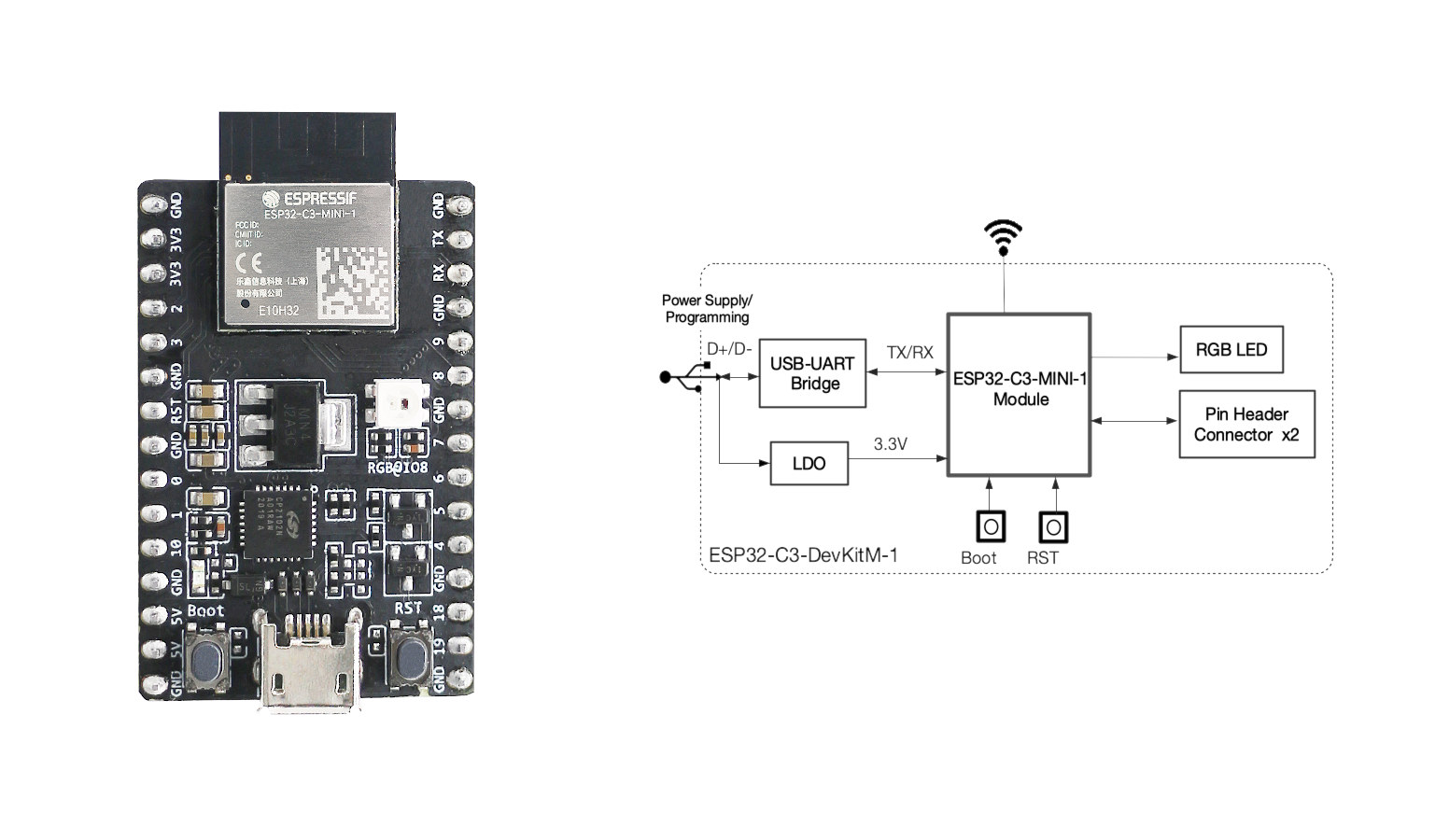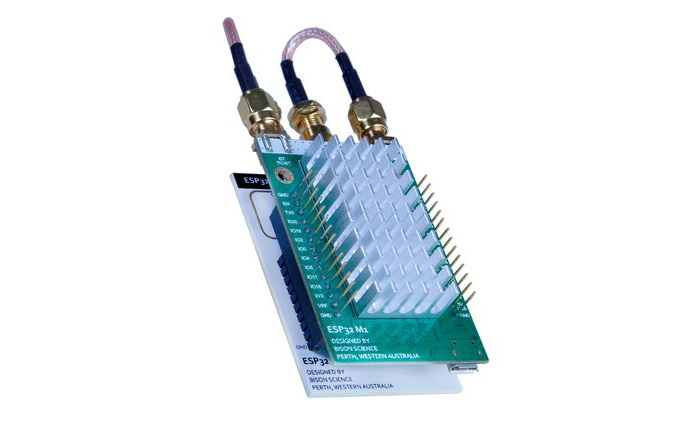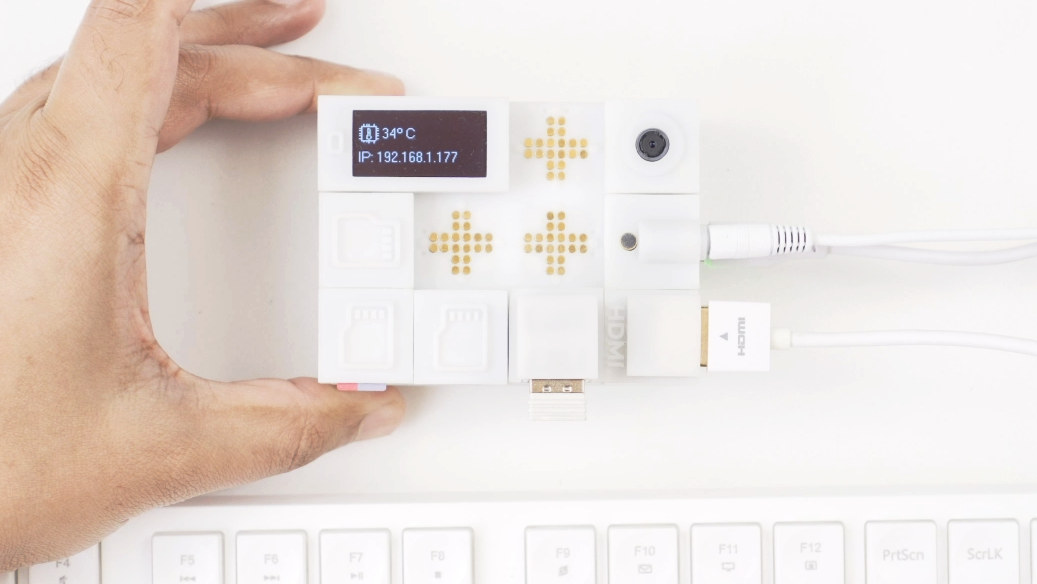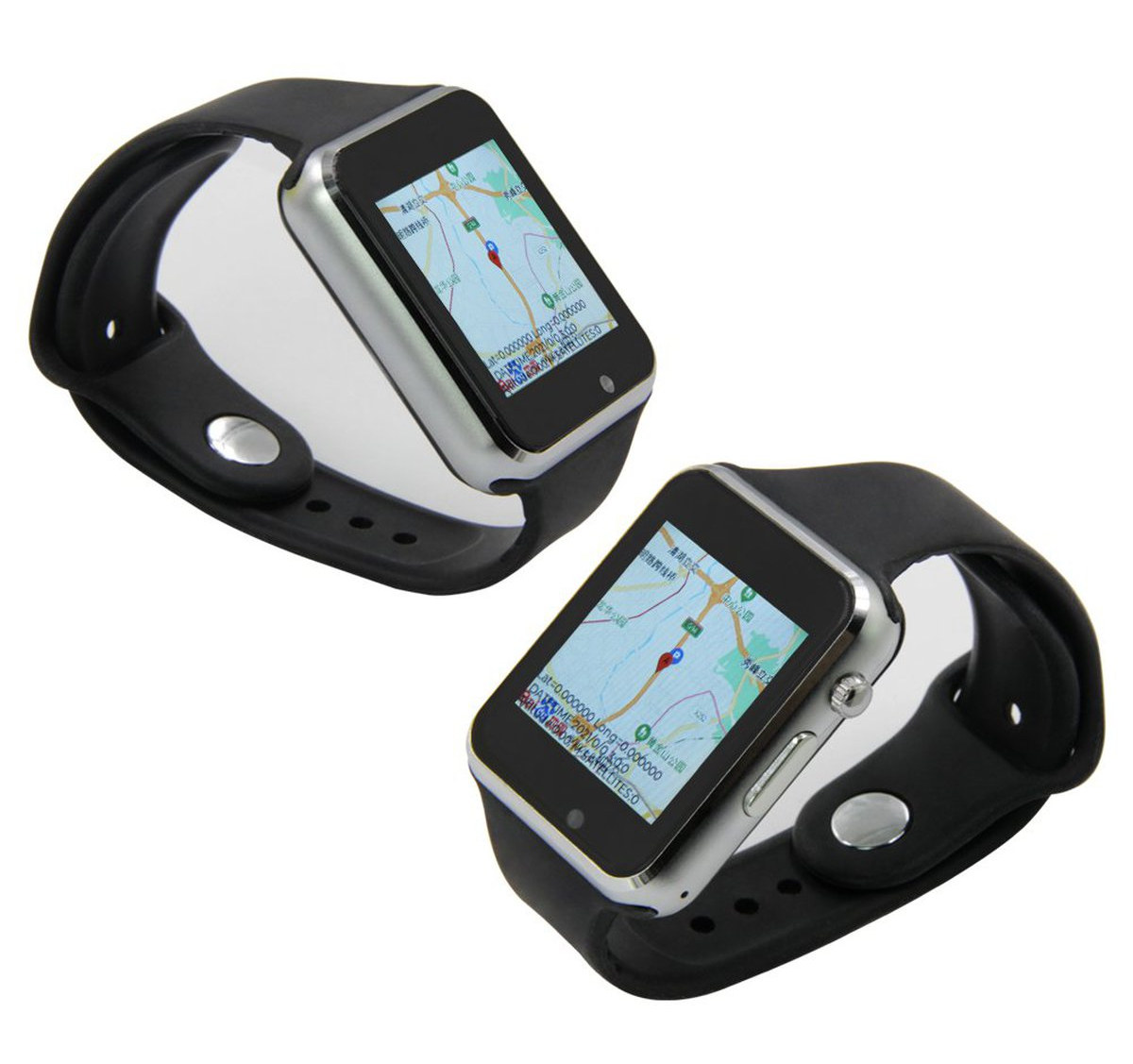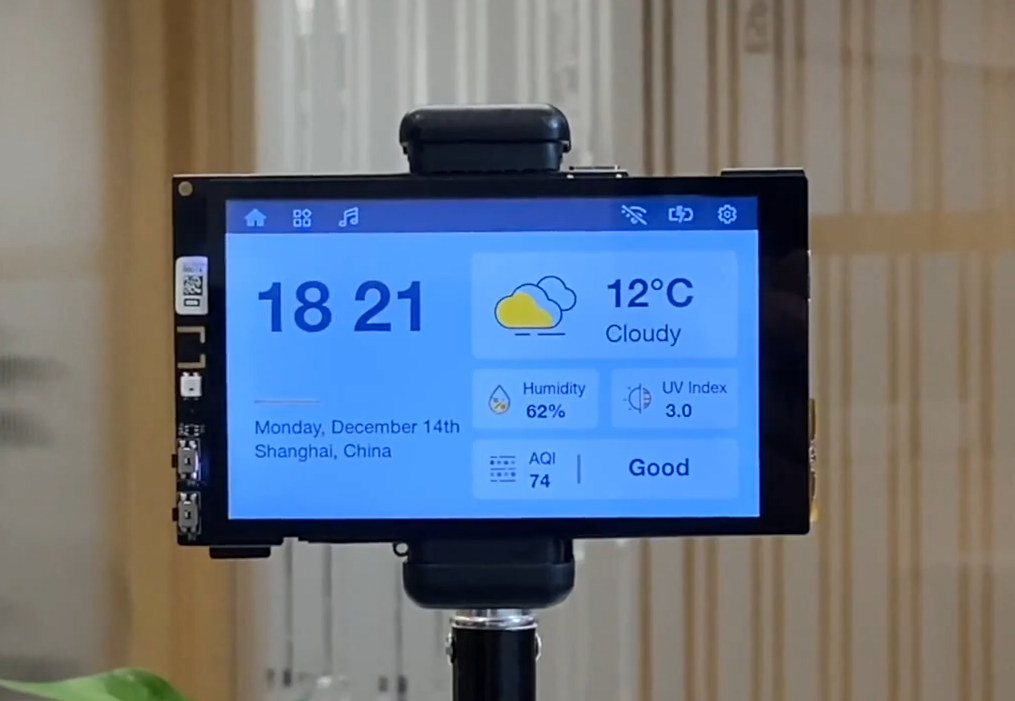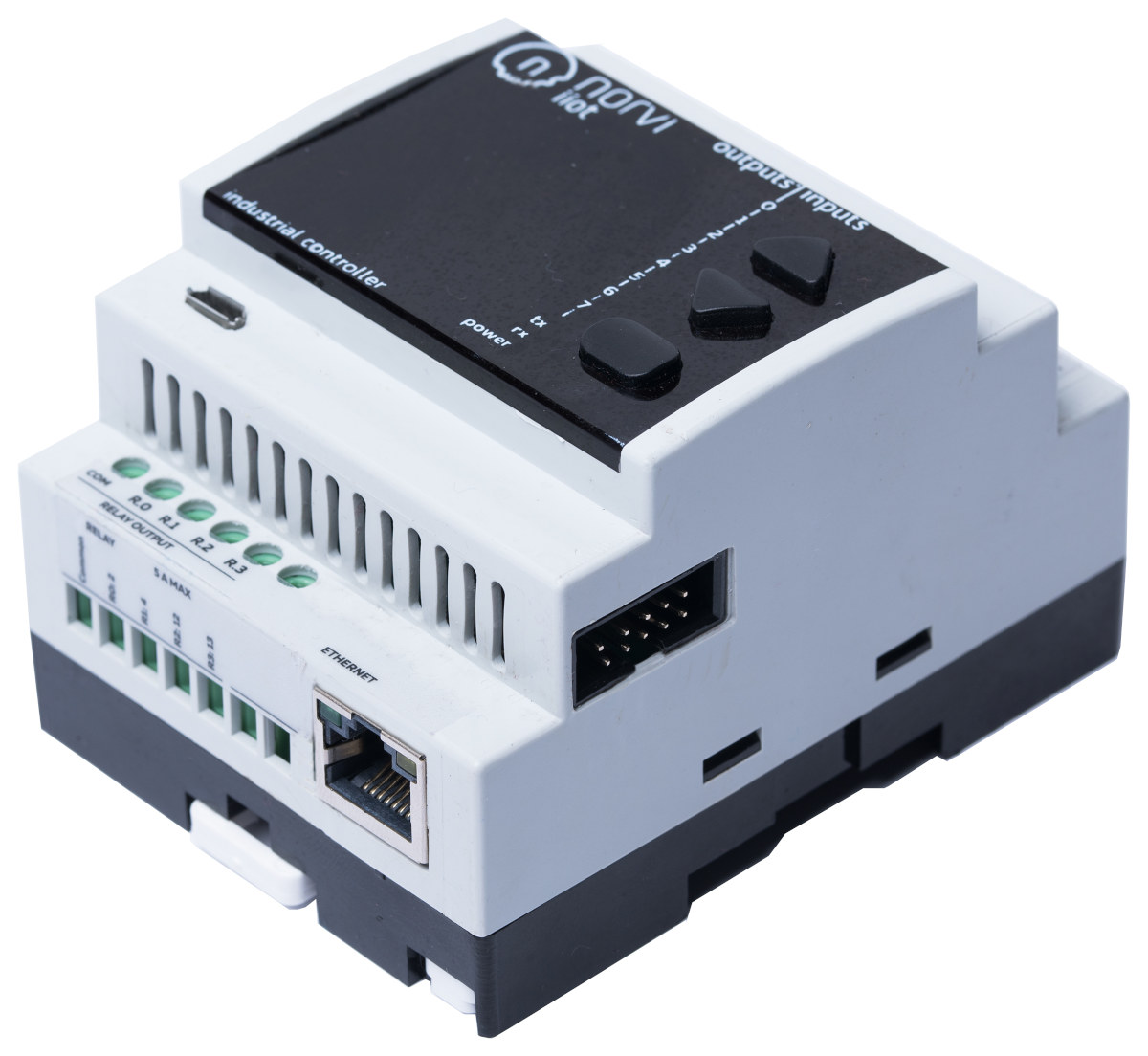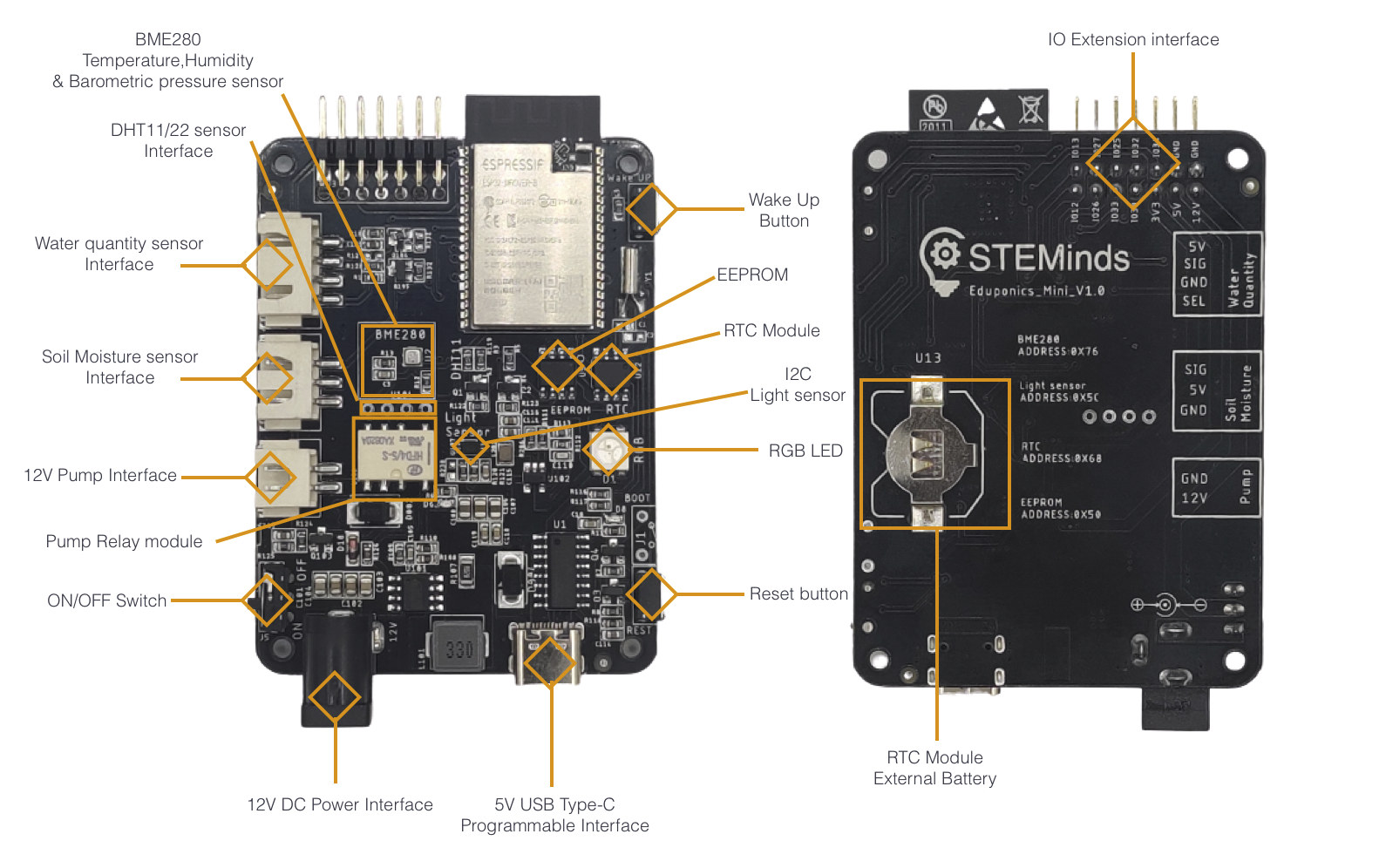Wemos D1 Mini is one of my favorites ESP8266 boards with a cheap price, tiny form factor, and support for stackable expansion boards. Lolin has now launched a small 2.13-inch tri-color E-Ink display that is compatible with D1 mini, D1 mini Pro, and D32 Pro boards, and sells for just $9.90 plus shipping. Specifications: 2.13-inchTri-Color (red/black/white) ePaper/e-Ink display with 212×104 resolution Driver IC – Good Display UC8151D Connection to D1 mini, D1 mini Pro, D32 Pro via 10-pin connector Debugging – 8-pin unpopulated header with EPD signals (SPI, Reset, Busy…) 3.3V, GND You may wonder why the PCB reads “2.13 INCH e-Paper 250×122”, while the resolution is 212×104. That’s because the company probably reused the PCB from their 2.13-inch black and white e-Paper display with 250×122 resolution (IL3897 driver). The display can be programmed with Arduino using LOLIN_EPD, Adafruit_GFX, and Adafruit_BusIO libraries as explained in the Wiki. You’ll find three […]
ESP32-C3-DevKitM-1 RISC-V WiFI & BLE board to launch for $8, modules for $1.8+
ESP32-C3 may be one of the most expected RISC-V processors in the IoT world, as it’s eventually expected to sell for the same price as ESP8266 and offers both WiFi and Bluetooth LE connectivity. Some engineering samples of the chip. modules and boards were distributed to developers shortly after the announcement at the end of the last year, but now it appears ESP32-C3-DevKitM-1 board will become available for $8 next month from distributors such as Mouser or DigiKey. Since I’ve never written about ESP32-C3-DevKitM-1 board let’s check out the specifications: Wireless module – ESP32-C3-MINI-1 with ESP32-C3FH4 (105°C) or ESP32-C3FN4 (85°C) 32-bit RISC-V single-core processor, up to 160 MHz, 4 MB embedded flash, 384 KB ROM, 400 KB SRAM (16 KB for cache), 8 KB SRAM in RTC Connectivity – 2.4 GHz 802.11b/g/n Wi-Fi 4 & Bluetooth LE 5.0 USB – 1x Micro USB port for power and programming via USB-UART […]
Long range ESP32 Wi-Fi development board promises up to 1.2km range (Crowdfunding)
WiFi is not really designed for kilometer range transmission, but CNLohr previously demonstrated 1km range with ESP8266, and some directional antennas are sold to expand the WiFi range. Bison Science’s ESP32-M1 Reach Out WiFi development board has been specifically designed for long-range connectivity with up to 30 dBm (1W) transmit power and support for various types of antennas for a 1.2-kilometer range, even tested up to 1.5km in a clear day. ESP32-M1 Reach Out features and specifications: WiSoC – Espressif Systems ESP32-D0WDQ6 dual-core processor @ 240 MHz Storage – 32 Mbit flash Connectivity 2.4 GHz Wi-Fi 4 802.11 b/g/n Bluetooth 4.2/5.x Classic and Bluetooth Low Energy (BLE) QPF4219 PA (Power Amplifier) and LNA (Low Noise Amplifier) Wi-Fi RF front end (RFFE) from Qorvo with 33 dB PA gain and 15 dB LNA gain Wi-Fi transmit output power adjustable from 21 to 30 dBm (1 W) conducted Wi-Fi front end bypass […]
Pockit modular Linux computer takes hot plugging magnetic blocks
There have been attempts to create modular computers and smartphones to reduce electronics waste and improve user-serviceability over the years with initiatives and products like Google Project Ara, PinePhone and Fairphone3 smartphones, DevTerm mini computer, Olimex TERES-I laptop, and many more. Here’s another modular computer project that looks really cool. Pickit modular computer is comprised of an STM32+ESP32 based mainboard with a socket for an optional Raspberry Pi Compute Module 3. The board includes magnets and electrical contacts to snap and hot-plug modules/blocks while the computer is running. The video demo embedded further below, is really impressive, but let’s check out Pockit preliminary specifications first: MCU – STMicro STM32 microcontroller Wireless MCU – ESP32 dual-core processor with WiFi and Bluetooth LE CPU module – Socket for Raspberry Pi Compute Module 3 Expansion 24+ feature BLOCKS ready to use with instant connection using magnetic-snaps including Ethernet, Display (HDMI), audio, sensor modules […]
Arduino WiFi & Bluetooth watch adds GPS, MicroSD slot, loses audio amplifier
LilyGO introduced the ESP32 powered T-Watch-2020 smartwatch last year with a slim form factor, a 1.54-inch LCD capacitive touch screen, WiFi & Bluetooth connectivity, and support for Arduino. In February, we noted TTGO T-Watch-2020 V3 with a built-in microphone to enable voice control, but the company has just listed TTGO T-Watch-2020 V2 adding GPS and a MicroSD card slot on its Aliexpress store for around $33. TTGO T-Watch-2020 V2 specifications: SoC – Espressif ESP32 dual-core wireless processor with 520KB SRAM System Memory – 8MB PSRAM Storage – 16MB QSPI flash, MicroSD card slot Display – 1.54-inch LCD capacitive touch screen Audio – Max98357 Class-D amplifier, buzzer/speaker Connectivity 802.11b/g/n WiFi 4 and Bluetooth 4.x/5.1 via ESP32 Quectel L76L module for GNSS (GPS, Beidou,GLONASS, QZSS) Sensors – BMA423 three-axis accelerometer with built-in step counting algorithm, activity recognition/tracking, advanced gesture recognition. Expansion – 13-pin 0.3mm pitch FPC expansion socket (shared with MicroSD card […]
ESP32-S2-HMI-DevKit-1 development kit ships with 4.3-inch touch display, 1,950mA battery
Espressif Systems ESP32-S2 single-core WiFi processor features an RGB LCD interface that makes it suitable for multimedia applications, and about two years ago, ESP32-S2-Kaluga-1 Multimedia Development Board was introduced with a touchscreen display & a camera. But now the company has launched another ESP32-S2 based development kit specifically designed for HMI (human-machine interfaces) found in smart home automation controllers, smart speakers with display, smart alarm clocks, and so on. Meet ESP32-S2-HMI-DevKit-1 equipped with a 4.3-inch color LCD display and a touch panel. ESP32-S2-HMI-DevKit-1 specifications: Wireless module – ESP32-S2-WROVER module with ESP32-S2 Xtensa single-core 32-bit LX7 microprocessor, up to 240 MHz with 128 KB ROM, 320 KB SRAM, WiFi 4 connectivity, 4MB flash, 2MB PSRAM Storage – Micro SD card slot Display – 4.3-inch display with 800×480 resolution, I2C capacitive touch panel Audio – Audio amplifier, built-in microphone, speaker connector USB – 1x USB-C OTG (DFU/CDC) port, 1x USB-C debug port […]
NORVI ENET DIN-Rail ESP32 Industrial Controller adds Ethernet port
Announced in 2019, NORVI IIOT industrial controller features an ESP32 WiFi and Bluetooth module, a choice of OLED or TFT Display, 24V DC input, and several analog and digital I/Os all housed in a DIN Rail enclosure. Sri Lanka-based ICONIC DEVICES has now announced an updated version with NORVI ENET DIN-Rail ESP32 industrial gateway based on a similar design, but with the addition of an Ethernet port using W5500 SPI to Ethernet controller. NORVI ENET (AE06) specifications: Wireless Module – ESP32-WROOM32 with ESP32 dual-core processor @ 160 MHz, 520 Kbytes SRAM / 4 Mbit Flash, WiFi 802.11 b/g/n, Bluetooth 4.2 Storage – MicroSD card slot Display – Built-in 0.96″ OLED display Communication – 10/100M Ethernet via W5500 controller, WiFi, Bluetooth, optional LoRa or NB-IoT module I/Os 8x 24V digital inputs for rotary encoders, sensors AE06-R model only – 4x 5A relay outputs for solenoid valves, contactors AE06-T model only – […]
Eduponics Mini is an ESP32-powered Smart Agriculture kit (crowdfunding)
One sector of the economy that should benefit the most from the Internet of Things is the agricultural sector, as environmental sensors are needed to optimize yields and also decrease costs with lower electricity and water usage. STEMinds Eduponics Mini Smart Agriculture kit is designed for this purpose. At the heart of the kit is an ESP32 board equipped with light, temperature, humidity, and barometric sensors, as well as interfaces to connect an external pump, a soil moisture sensor, a water quality sensor, and more environmental sensors. Eduponics Mini board specifications: Wireless module – ESP32-WROVER-B module with ESP32 Wi-Fi and Bluetooth SoC, 4MB QSPI flash, 8MB SPRAM, PCB antenna Built-in sensors BH1750 I2C light sensor BME280 I2C temperature, humidity, and barometric sensor Expansion 2-pin connector for 12V pump with built-in relay module 3-pin connector for soil moisture sensor or any other analog or digital device 4-pin connector for water quantity […]


